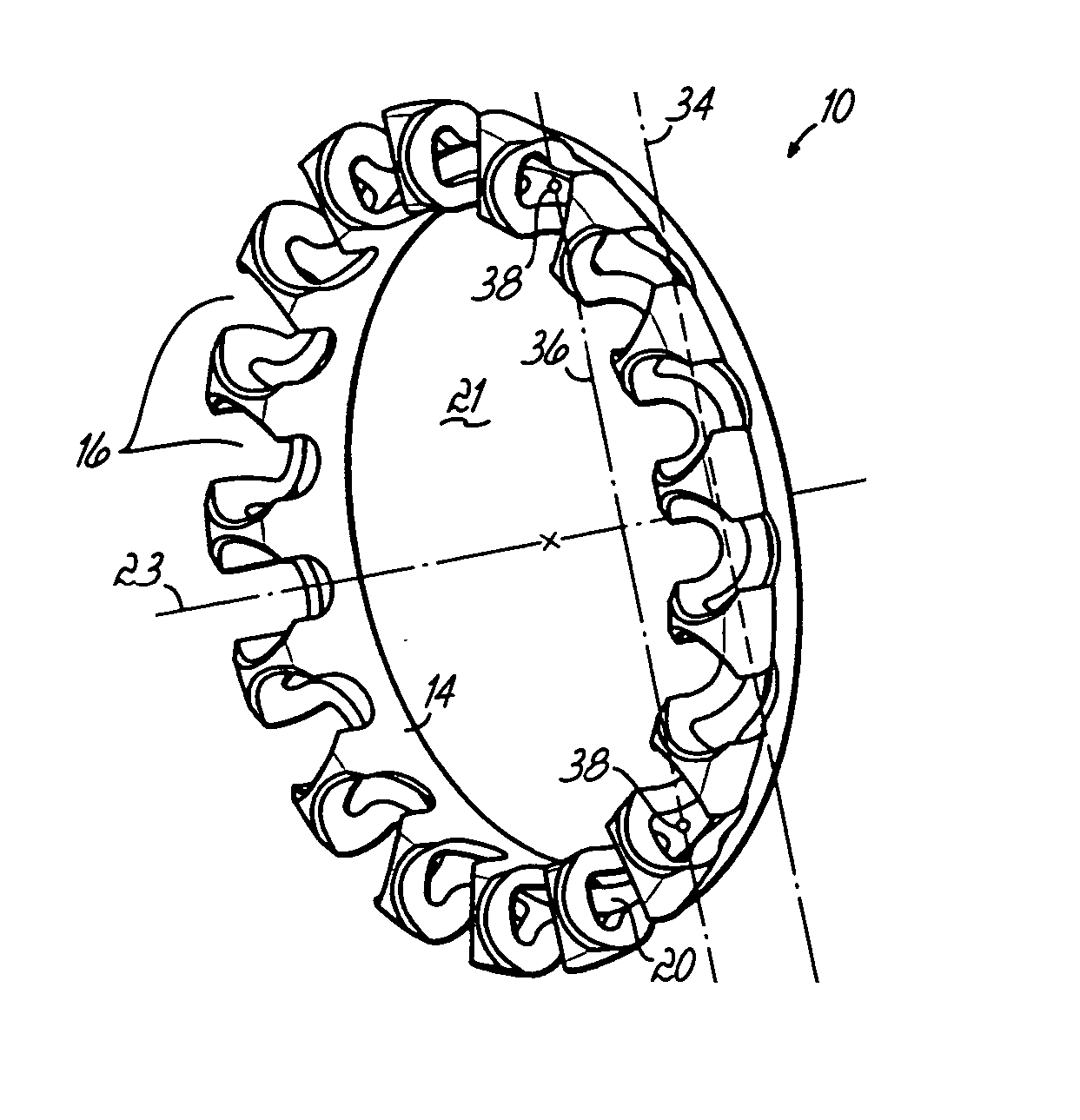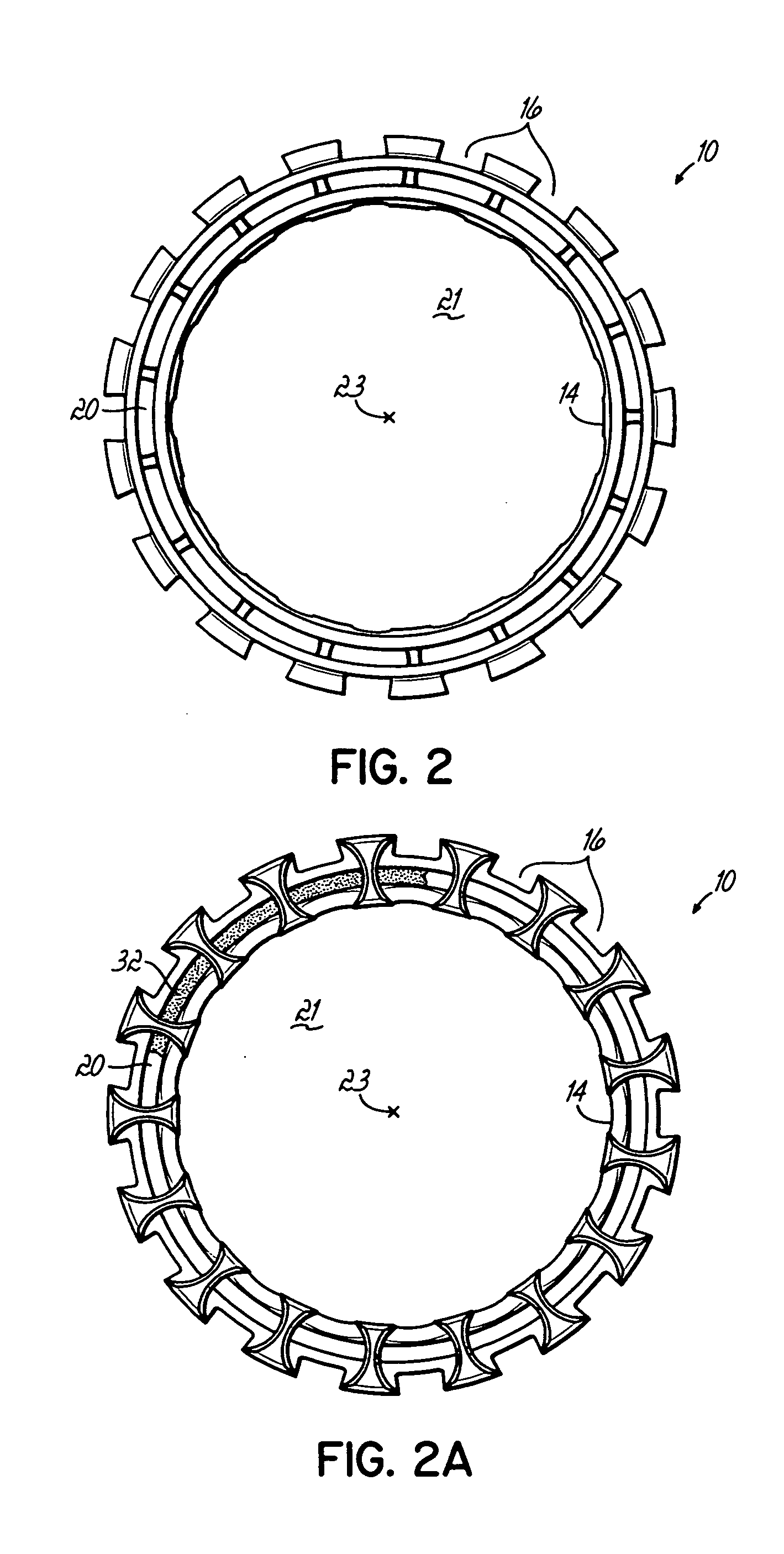Separator grease retention and feed system for wheel spindle bearings
a technology of grease retention and feed system, which is applied in the direction of bearings, mechanical equipment, transportation and packaging, etc., can solve the problems of difficulty in properly lubricating and/or greasing the rolling elements of the bearing assembly, preventing proper positioning, and difficulty in lubrication, so as to reduce and eliminate drawbacks, eliminate the need for volume greasing, and reduce friction
- Summary
- Abstract
- Description
- Claims
- Application Information
AI Technical Summary
Benefits of technology
Problems solved by technology
Method used
Image
Examples
Embodiment Construction
[0023] Referring to the Figures, one preferred embodiment of the present invention includes a separator 10 to be used as a component of a bearing 12. This separator 10 includes a frame 14 having a plurality of cavities 16 for receiving a plurality of rolling elements 18. This plurality of rolling elements 18 may, as shown in the illustrated embodiment, be ball members for use in a ball bearing. Thus, in the illustrated embodiment, each rolling element would be received by a cavity 16.
[0024] The frame 14 of the separator 10 may further include a lubrication channel 20. As can be seen with particular reference to FIGS. 1A, 2, and 2A, this lubrication channel 20 is in fluid communication with at least one of the plurality of cavities 16 disposed in the frame 14. In particular, in one embodiment, the lubrication channel 20 may be in fluid communication with each of the plurality of cavities 16. In the illustrated embodiment of the present invention, this communication between the lubri...
PUM
 Login to View More
Login to View More Abstract
Description
Claims
Application Information
 Login to View More
Login to View More - R&D
- Intellectual Property
- Life Sciences
- Materials
- Tech Scout
- Unparalleled Data Quality
- Higher Quality Content
- 60% Fewer Hallucinations
Browse by: Latest US Patents, China's latest patents, Technical Efficacy Thesaurus, Application Domain, Technology Topic, Popular Technical Reports.
© 2025 PatSnap. All rights reserved.Legal|Privacy policy|Modern Slavery Act Transparency Statement|Sitemap|About US| Contact US: help@patsnap.com



